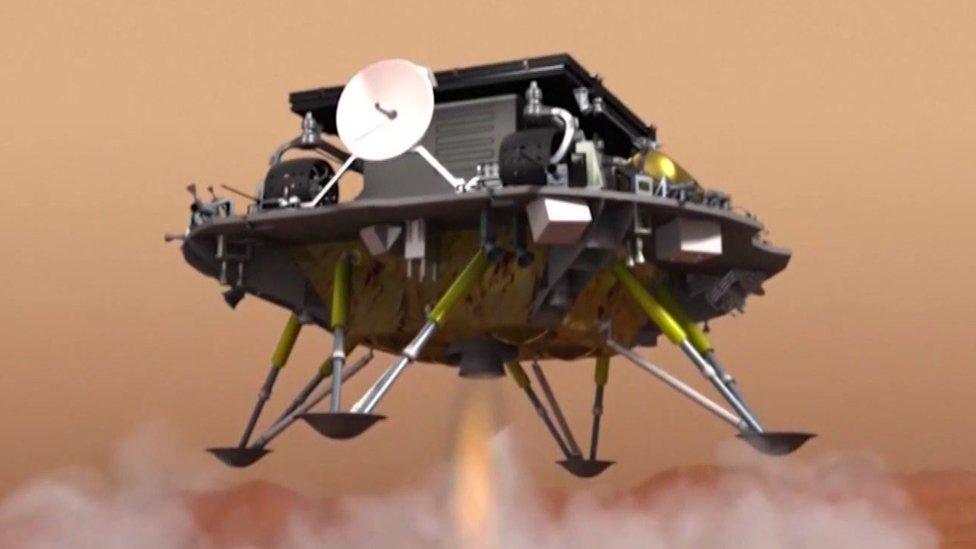China's Zhurong rover takes first drive on Mars
- Published
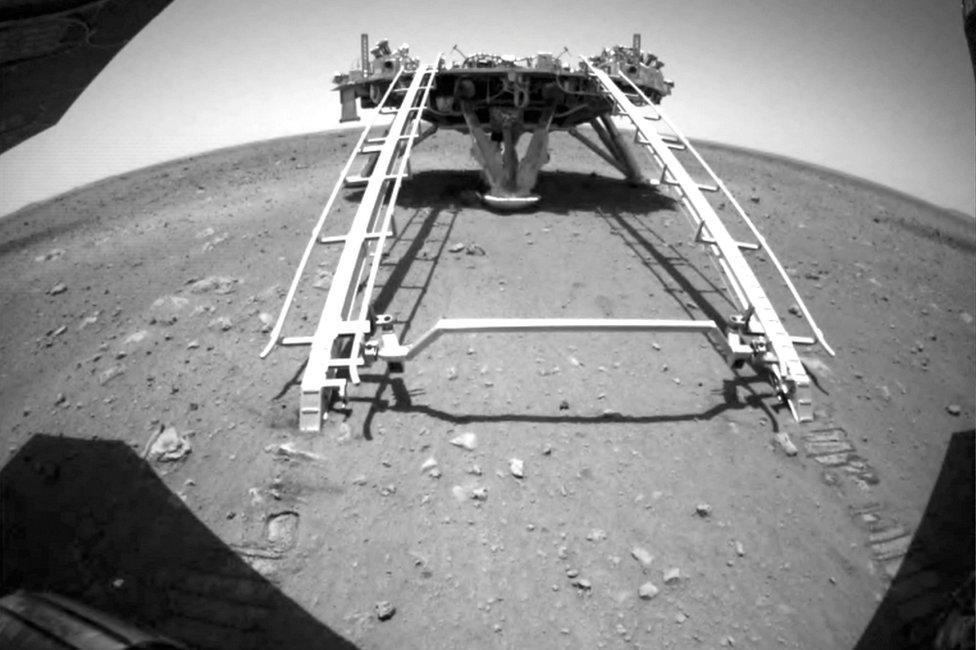
The Zhurong rover drove down the ramp of the lander on to the surface of Mars
China's remote-controlled rover, which landed on Mars a week ago, has driven down from its landing platform to the surface of the planet.
This makes China the second country after the US to operate a rover there.
The Zhurong robot is due to study the planet's surface rocks and atmosphere. It will also look for signs of life, including any subsurface water or ice.
China's Tianwen-1 mission, consisting of an orbiter, lander and rover, was launched in July last year.
The deputy chief commander of the mission, Zhang Yuhua, said the rover was designed to operate for 92 Earth days (or 90 Mars days, known as "sols", which are slightly longer than Earth days) and would share its data via the orbiter.
China landed its first spacecraft on Mars last week
"We hope we can get a comprehensive covering of Martian topography, landform and environment, and the exploratory data of the radar detecting the Martian subsurface during one Martian year," she said.
"By doing so, our country will have our own abundant and first-hand data about Martian resources."
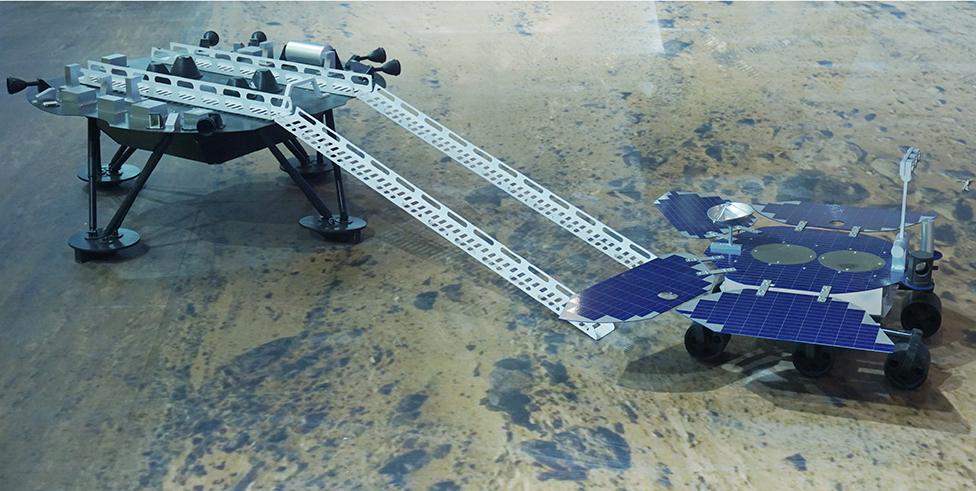
This model shows how Zhurong descended from its landing platform
The solar-powered, 240kg (530lb) six-wheeled robot - named after a Chinese mythical fire god - will be exploring Utopia Planitia in Mars' northern hemisphere.
This colossal basin - more than 3,000km (1,860 miles) wide - was likely formed by an impact early in the planet's history. There is some evidence pointing to it having held an ocean long ago.
Remote sensing by satellites indicates there are significant stores of ice at depth.
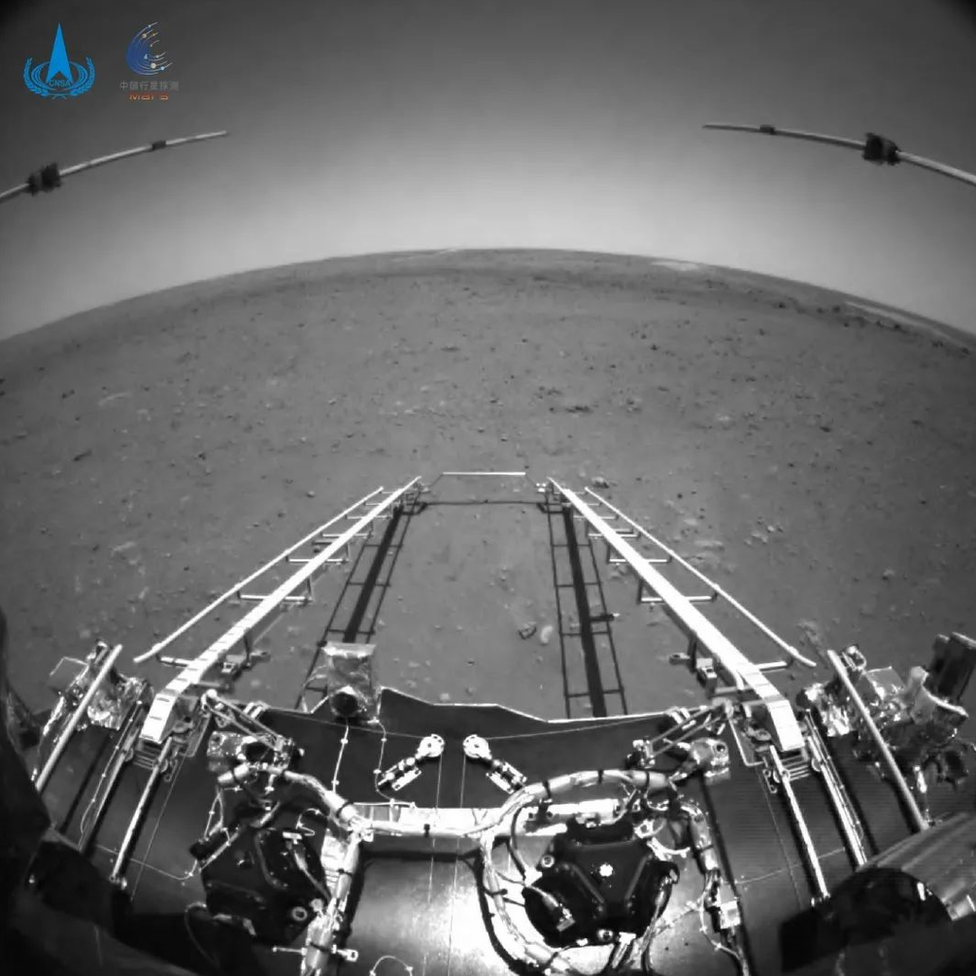
The front view from Zhurong shows the flat landscape of Utopia Planitia
Utopia Planitia is where Nasa landed its Viking-2 mission in 1976.
The US landed the much larger (one-tonne) Perseverance robot in February, and its roving mission is also just getting under way.
Europe's space agency, which has twice failed with landing attempts, will send a rover called Rosalind Franklin to Mars next year in a joint project with Russia.
Related topics
- Published19 May 2021
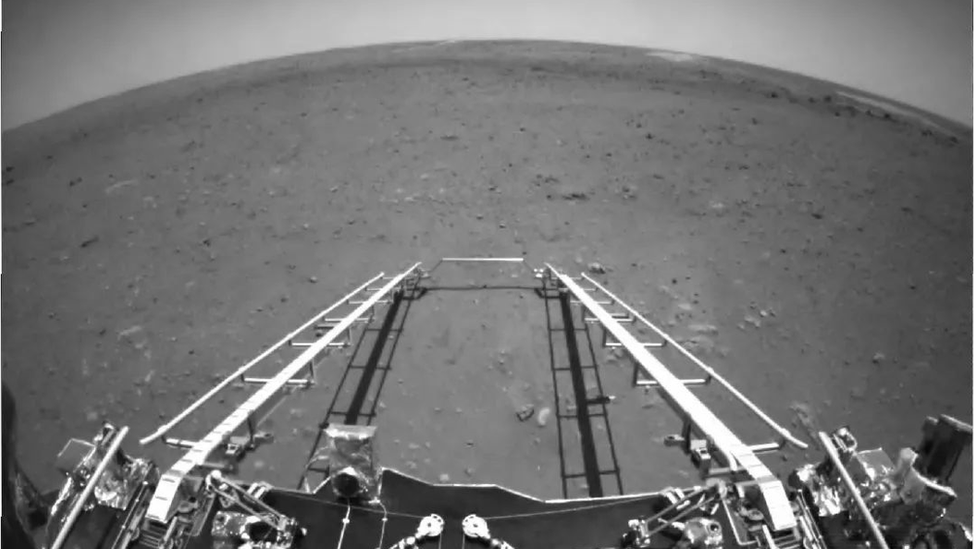
- Published15 May 2021
